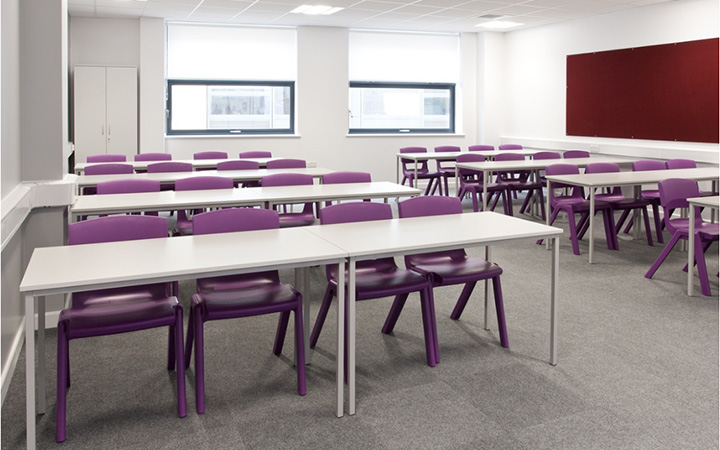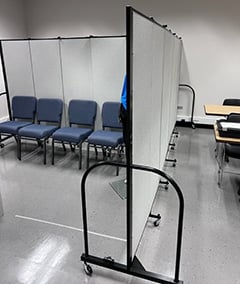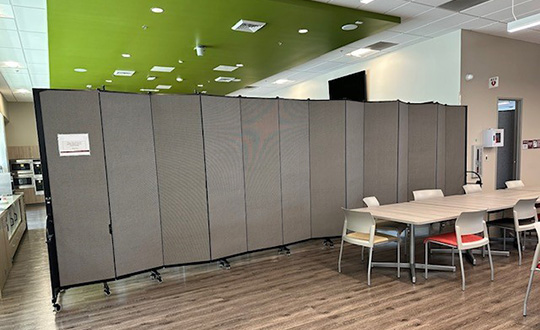How to Create Focused Classrooms in University Spaces
Market: Education
In any educational landscape, the classroom environment is pivotal in shaping students’ learning experiences and outcomes. While the focal point of classroom management can often be in the K-12 sector, it is also imperative in large university settings. These institutions serve diverse student populations and can have just as many distractions that challenge attention spans. For this reason, college professors and administrators are keeping new strategies in their toolbelts for creating more focused classroom spaces for overall engagement and effective learning.

Understanding the Challenges in Large University Settings
High student-to-professor ratios
As more students attend university, class sizes can grow and become harder to manage. Even though lecture halls are common for freshmen studies, smaller, more focused classroom spaces are necessary for upper-level capstone courses. Educators must balance hiring more staff while simultaneously changing up their current classroom design to adjust to the growth.
Diverse student demographics and learning styles
Most colleges aspire to have a diverse representation of students. Even though this diversity is and should be celebrated, it also presents different learning styles based on backgrounds and individual capabilities. University administrators have the responsibility to offer as much assistance as possible for students to get the most out of their education.
Technological distractions and attention spans
It’s no secret that technology has come a long way in the past couple of decades. While these advances hugely progress and shape how we operate, constantly being plugged in can offer plenty of distractions in any learning environment. Educators today grapple with this challenge more than any other generation.
Inclusivity and Accessibility in Classroom Design
Universal Design for Learning Principles
Remember the Universal Design for Learning (UDL) principles when creating your classroom. UDL is an educational structure that helps professors and teachers make the best possible learning environment for all types of learners by providing multiple methods of representation, expression, and engagement. Considering these principles, you can give your students as many resources as possible to succeed in their studies.
Addressing Sensory Overload
In the classroom, it’s important to gain and hold your student’s focus. Though you can’t always address every student’s needs, you can be generally mindful of distractions in your learning space. For instance, minimizing visual clutter can help limit sensory distractions. Creating separation from different activities in one room, such as a lab space and seating areas, can also reduce interruptions and prevent sensory overload.
Designing Focused Classroom Spaces: Key Strategies
 Flexibility in Furniture Arrangement
Flexibility in Furniture Arrangement
Many smaller classes need the capability to transform into small group settings from a larger instructional space. By creating a classroom that’s easy to adapt, you can accommodate different teaching styles and flip the room within minutes for another class.
Acoustics and Noise Control
Acoustic control is essential in any classroom space. Harsh echoes from a lot of voices or high ceilings can be incredibly distracting. Incorporating sound absorption panels or other soft furniture in your classroom can help minimize this echoing.
Incorporating Technology Wisely
By integrating interactive displays and presentation tools, you can continue new ways to capture student interest. These tools help you share content while promoting engagement and participation. Balancing digital resources with traditional teaching methods can also help cater to different learning styles.
Student Engagement and Collaboration Spaces
In a large university classroom, students may feel like they are just an audience member instead of an active participant. Having the capability to create breakout spaces for projects and group discussions can help your students stay engaged. Splitting the class into shorter segments allows you to adjust the pacing of instruction and create an environment for more active learning.
Real-Life Example of Creating More Focused Classroom Space
A California Health Sciences University administrator was looking for a way to divide a large room to create more focused classroom spaces for her students. Instead of doing full construction or moving the students to another space, this educator opted for portable room dividers from Screenflex.

This room divider is an excellent solution to limiting distractions in a higher-ed classroom. It enhances sound absorption and creates privacy. Since it is portable and folds accordion-style, the temporary wall can also easily move out of the way and close up for compact storage. As a bonus, this movable partition includes tackable fabric so educators can display posters and signage. Adding adaptable and acoustical furniture, such as a portable wall, is a simple and cost-efficient way to enhance the focus in an educational space.
By combining adaptable designs, appropriate technology integration, and universal inclusivity principles, educators can redefine what curated and focused classrooms look like and how students engage with learning. For additional help managing your classroom space, explore more Screenflex Room Dividers on our site or reach out to one of our knowledgeable sales consultants.